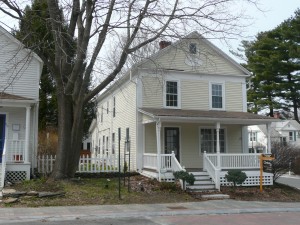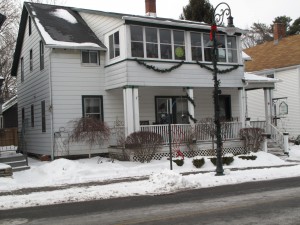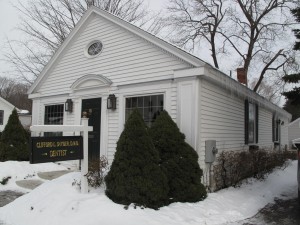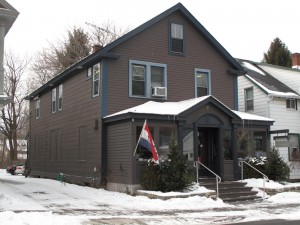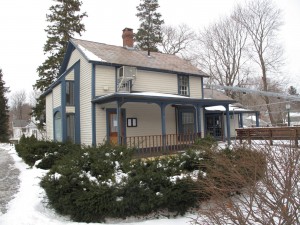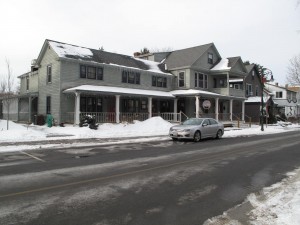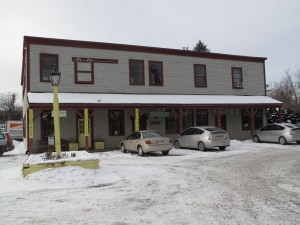From Surveys Completed 2011-2012 by the Lenox Historical Commission
ARCHITECTURAL DESCRIPTION:
This Greek Revival/Gothic Revival style building has two stories, an asphalt shingle roof and is intact. The original part of the house has 2-bays, a wood frame, cross-gable and a brick center chimney. There is wood clapboard siding, corner pilasters and extra large entablatures on the sides. The right side obscured by a large recessed ell, and there is a glazed entry porch with a shed roof in front of ell. The recessed balcony on the second floor above has pillars and scroll sawn braces. The porch on the left side is also glazed (early), and the rear portion is enclosed with a hipped roof, chamfered pillars and scroll sawn/console braces. The 1.5-story rear ell has a brick chimney between it and the main house. The 1-story rear lean-to on the right side ell has some original 6-o-6 and 2-o-2 windows, and frieze windows on the left side.
HISTORICAL NARRATIVE:
This lot was originally part of the Henry Cook estate, which he developed and sold in the 1840’s and 50’s. This property was purchased by Matthew Colbert in 1853. The Colbert family also owned the house at 100 Church Street.
The structure is depicted on 1854 Clark Map and “Mrs. Colbert” on the 1876 Beers Map with a simple rectangular footprint. The current footprint is on the 1893 Sanborn Map.
In 1930 it was sold to Broderick and then in 1941 to Joseph and Selma Malmstrom. In 1949 it was sold to John and Mary O’Brien who ran greenhouses in Lenox called O’Brien’s Florist which was located on West Street.
The property was acquired by Matthew J. Merritt III in 1999 and then the Merritt Family 2001 LP in 2002.
BIBLIOGRAPHY and/or REFERENCES:
1854 Clark Map, 1876 Beers Map and 1893 Sanborn Map.
Registry of Deeds, Pittsfield, Mass.
County Atlas of Berkshire County, Mass., F.W. Beers, 1876
Atlas of Berkshire County, Mass., Barnes & Farnham 1904
Gazetteer of Berkshire County, Mass. Hamilton Child, 1885
Lenox Assessor’s database 2012

